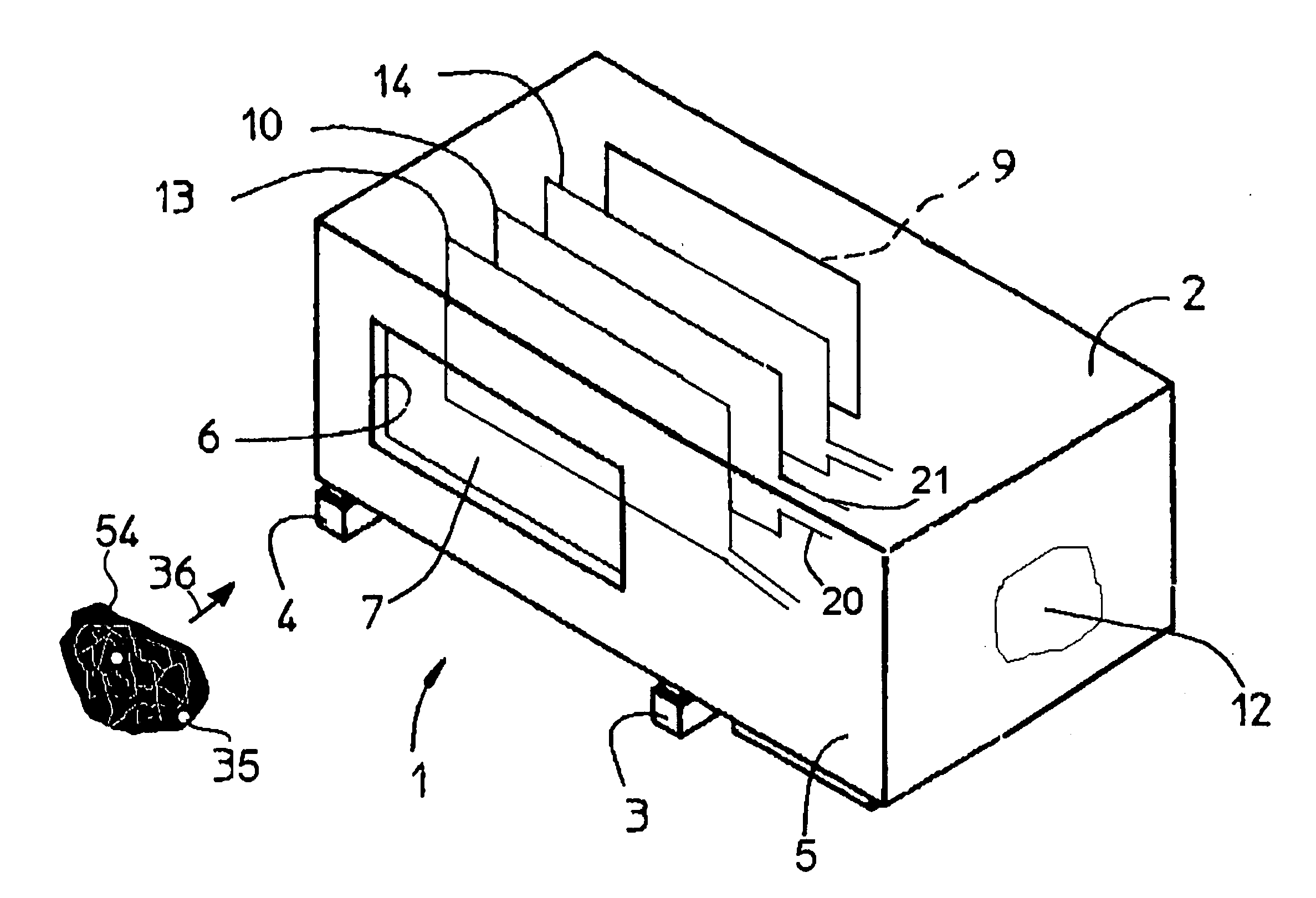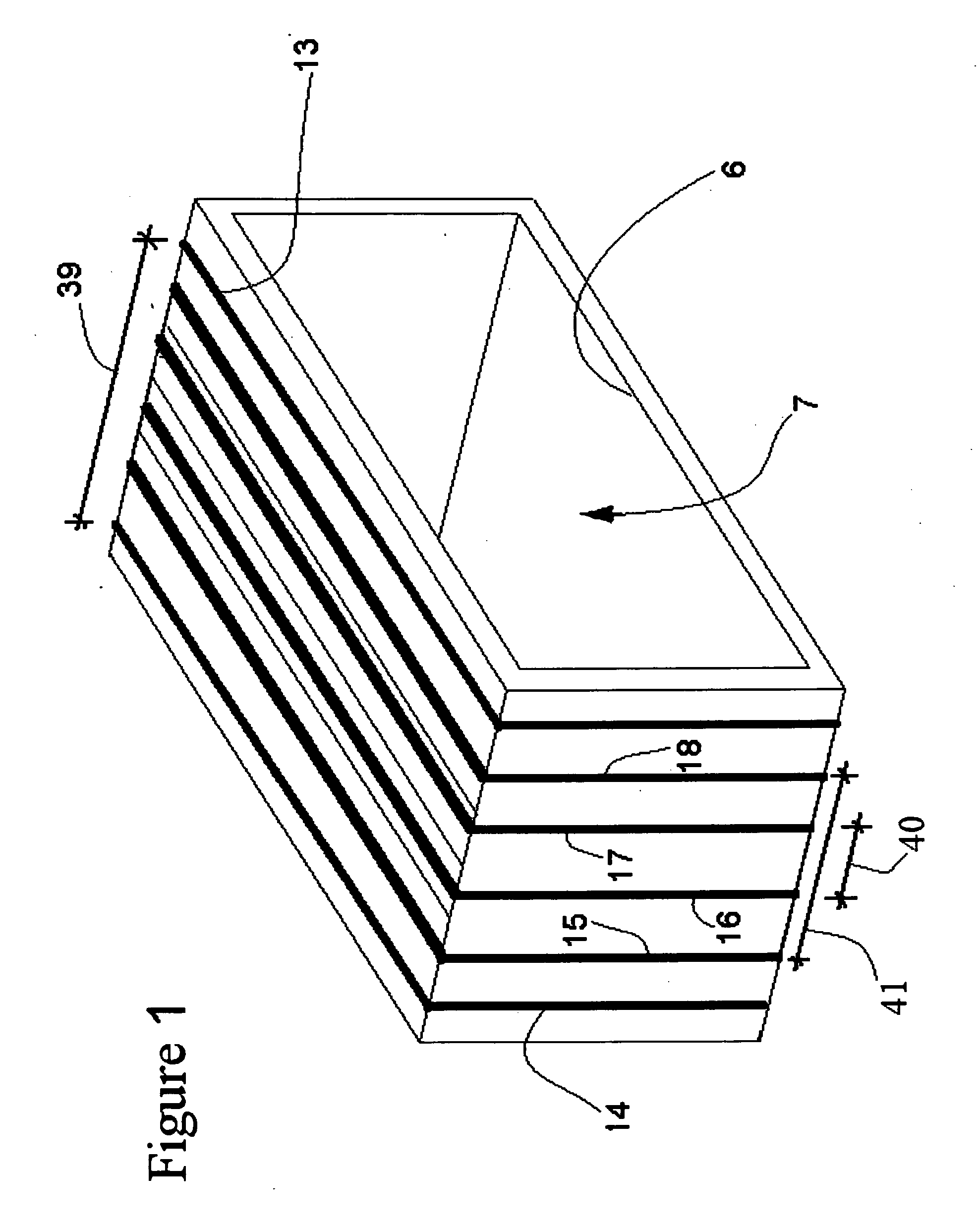Oscillator coil geometry for radio frequency metal detectors
a technology of oscillator coil and metal detector, which is applied in the field of radio frequency metal detection, can solve the problems of reducing detector performance and raising background noise, and achieve the effects of reducing the size of the smallest detectable contaminant, enhancing the received signal level, and reducing the size of the search head
- Summary
- Abstract
- Description
- Claims
- Application Information
AI Technical Summary
Benefits of technology
Problems solved by technology
Method used
Image
Examples
Embodiment Construction
[0030]Referring to FIG. 2, a metal detector constructed according to the principles of the present invention is shown generally at 1. The metal detector 1 includes a metal or conductive cabinet 2, typically stainless steel or aluminum that is supported by shock absorbing feet 3 and 4. The cabinet is formed to include a generally rectangular first sidewall 5. The sidewall 5 includes an opening or first aperture 6 which permits access to the interior volume of cavity 7. The cavity 7 is bounded by a coaxially aligned second aperture 9, such that an article 54 may enter the cavity 7 through first aperture 6 and exit cavity 7 through the second aperture 9. The article may enter the cavity 7 by traveling generally in the direction of arrow 36 via a conveyor which may be a belt or chain as well as gravity feed mechanism or a pump forwarding the article through a conduit. In an alternate embodiment the aperture may have a circular shape, and the entire cabinet may also be generally circular...
PUM
 Login to View More
Login to View More Abstract
Description
Claims
Application Information
 Login to View More
Login to View More - R&D
- Intellectual Property
- Life Sciences
- Materials
- Tech Scout
- Unparalleled Data Quality
- Higher Quality Content
- 60% Fewer Hallucinations
Browse by: Latest US Patents, China's latest patents, Technical Efficacy Thesaurus, Application Domain, Technology Topic, Popular Technical Reports.
© 2025 PatSnap. All rights reserved.Legal|Privacy policy|Modern Slavery Act Transparency Statement|Sitemap|About US| Contact US: help@patsnap.com



